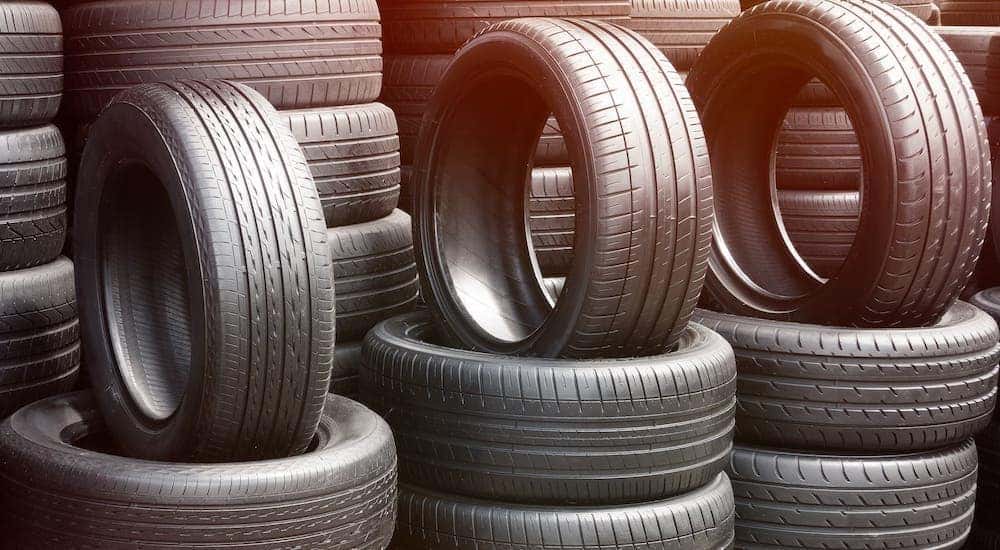Save Big with Mopar Tire Service Specials in Morris: Limited Time Supplies
Wiki Article
Tire Service: Understanding Tire Pressure Tracking Systems
Understanding Tire Stress Tracking Equipments (TPMS) is a crucial element of maintaining ideal automobile efficiency and safety and security on the road. With developments in vehicle modern technology, TPMS has become a conventional feature in modern-day vehicles, providing real-time information on tire pressure levels. Diving much deeper into the complexities of TPMS, one can uncover the different elements that comprise this system and the importance of each in guaranteeing exact surveillance. From straight to indirect TPMS systems, the landscape of tire pressure monitoring is varied, each with its one-of-a-kind collection of considerations and advantages. Remain tuned to unravel the intricacies of TPMS, from upkeep suggestions to the indisputable benefits of maintaining your tires correctly pumped up. morris tire and alignment.
Importance of TPMS
The relevance of Tire Stress Surveillance Systems (TPMS) hinges on their capacity to boost vehicle safety and efficiency via real-time monitoring of tire stress levels. Keeping the proper tire pressure is essential for guaranteeing optimum handling, stopping, and general security of a lorry. TPMS offers chauffeurs with instant comments on any kind of underinflated or overinflated tires, permitting for timely modifications to be made.
Parts of TPMS
Sensors are typically situated in the tire valve stem or connected to the wheel assembly, where they measure tire pressure and transfer information to the control component. Some advanced TPMS designs likewise present the real tire pressure readings for each tire, supplying drivers with real-time details to make certain optimal tire performance and security. By keeping track of tire pressure continually, TPMS helps prevent accidents, lowers tire wear, and improves gas effectiveness, making it a critical part for lorry security and performance. mopar tire service specials.
Types of TPMS

On the various other hand, indirect TPMS depends on the automobile's wheel rate sensing units to monitor tire stress. This system spots underinflation by comparing the rotational speeds of the wheels. Indirect TPMS is much less expensive than straight TPMS, as it makes use of existing sensors within the lorry.
While straight TPMS uses a lot more exact analyses, indirect TPMS is less complex in design and normally calls for less maintenance. Both systems have their limitations and benefits, and the choice in between them often depends on variables such as expense, vehicle make, and personal choice. Recognizing the distinctions between these two kinds of TPMS can help automobile proprietors make educated choices regarding tire upkeep and safety.
TPMS Maintenance Tips
Conduct regular checks on the tire pressure levels and contrast them with check my source the TPMS analyses to guarantee they are regular. Throughout tire turning or replacement, make certain that the TPMS components are taken care of very carefully to protect against any type of potential damage. If the TPMS advising light brightens on the dashboard, attend to the problem without delay by examining the tire pressures and the total system for any mistakes.Benefits of Appropriate Tire Pressure
Keeping appropriate tire pressure, as stressed in TPMS Upkeep Tips, is essential for enjoying the countless benefits associated with ideal tire stress levels. One of the main advantages of preserving the appropriate tire pressure is enhanced fuel performance. When tires are effectively pumped up, there is less rolling resistance, bring about much better gas economic situation. Furthermore, appropriate tire stress guarantees also tire wear, extending the life-span of the tires and advertising more secure driving conditions. With the right tire stress, cars additionally have much better handling and grip, particularly in damaging weather condition conditions. This can boost total driving efficiency and safety and security for the vehicle driver and guests. Keeping optimum tire stress view can contribute to a smoother and extra comfy experience by lowering vibrations and sound caused by underinflated tires. Finally, the advantages of appropriate tire stress go past simply tire long life; they encompass enhanced fuel performance, enhanced safety and security, much better lorry efficiency, and total driving comfort.Final Thought
Finally, comprehending tire pressure surveillance systems (TPMS) is vital for maintaining optimal tire pressure and ensuring vehicle security. By recognizing the relevance of TPMS, knowing with its elements, knowing the different types readily available, sticking to proper upkeep suggestions, and understanding the benefits of keeping appropriate tire stress, drivers can boost their driving experience and lengthen the lifespan of their tires. Proper tire stress is crucial to effective and safe car procedure.
Report this wiki page